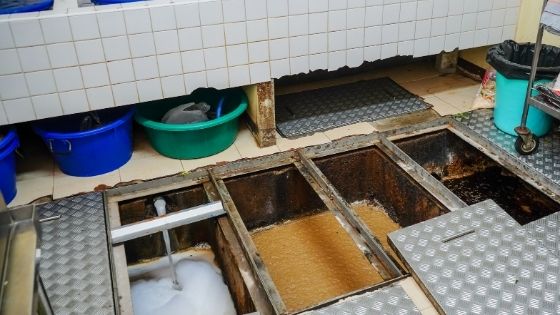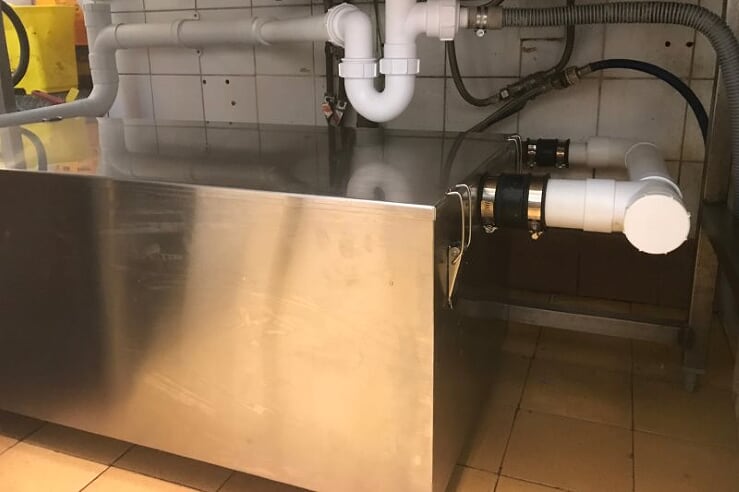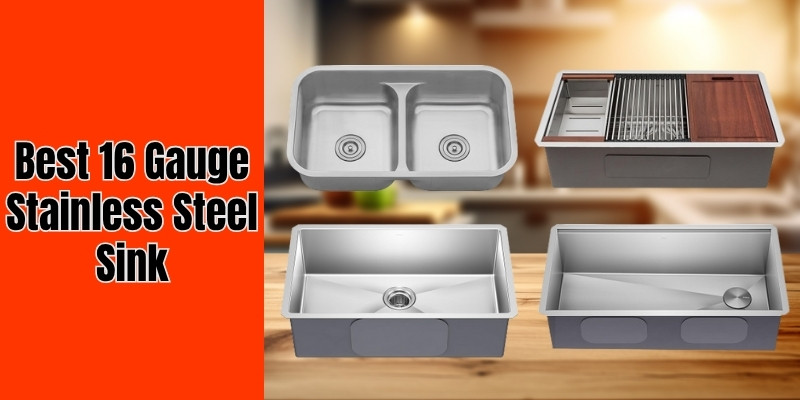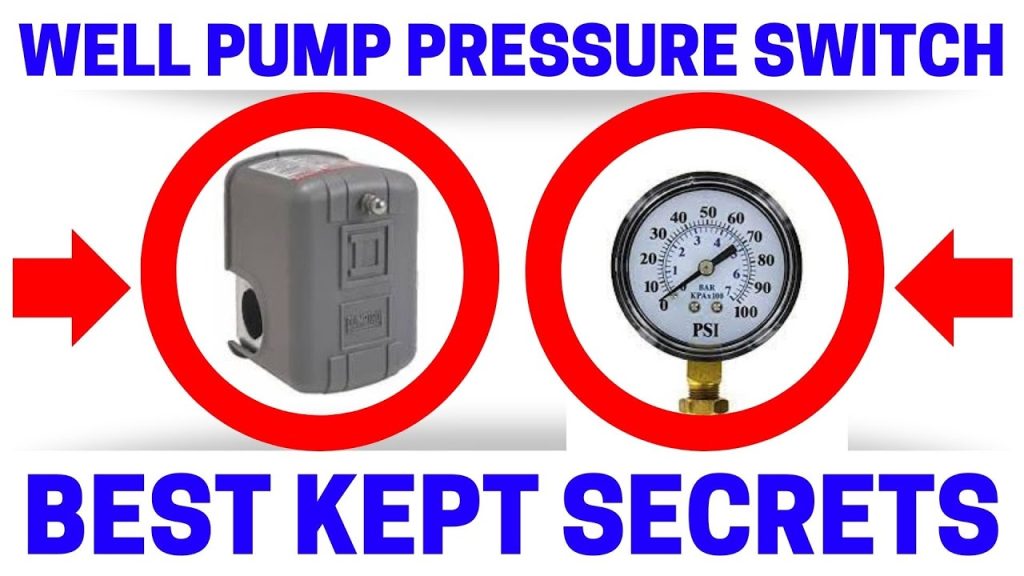Disclosure: This post contains affiliate links and I will be compensated if you make a purchase after clicking through my links. Learn More
Are you considering installing a grease trap but worried about the costs involved? You’re not alone.
Grease traps are essential for keeping your plumbing in top shape, especially if you run a restaurant or any food service business. However, understanding the costs can be confusing and overwhelming. By the end of this article, you’ll have a clear picture of what to expect financially, allowing you to plan and budget effectively.
We’ll break down everything you need to know, from material costs to installation fees, so you can make an informed decision without any surprises. Let’s dive in and turn this daunting task into a simple, straightforward process.
Factors Affecting Grease Trap Costs
When considering grease trap installation costs, several factors come into play that can significantly impact your budget. Understanding these elements will help you make informed decisions and avoid unexpected expenses. Whether you’re managing a bustling restaurant or a small café, knowing what affects the cost can save you time and money.
Size And Capacity
The size and capacity of a grease trap are crucial determinants of cost. Larger traps, designed for high-volume kitchens, are more expensive due to their increased materials and manufacturing complexity. A small café might need a 20-pound trap, while a busy restaurant may require one with a 100-pound capacity.
Consider your business’s waste production before choosing a size. Opting for the right capacity can prevent frequent maintenance and save costs in the long run.
Material Type
Grease traps come in various materials such as stainless steel, plastic, and concrete. Stainless steel traps are durable and resistant to corrosion but are often pricier. Plastic traps are cost-effective but may not last as long in high-temperature environments.
Concrete traps, although heavy, are robust and ideal for large installations. Each material has its pros and cons; weighing them against your budget and kitchen needs is essential.
Location And Accessibility
Where you install your grease trap can also affect costs. If your kitchen is easily accessible, installation might be straightforward and cost less. However, if the trap must be placed in a cramped or difficult-to-reach area, labor costs can rise.
Consider the layout of your kitchen and consult with professionals to estimate the impact of location on installation expenses. Accessibility can simplify maintenance, saving future costs.
Installation Complexity
Installation complexity varies based on the existing plumbing and kitchen design. A simple setup with compatible plumbing requires less labor and reduces costs. Complex installations, involving extensive modifications to existing systems, can be expensive. Ask yourself if your current setup is compatible or if significant changes are needed. Planning for complexity can help avoid surprise costs and delays.
Have you ever had to rethink a kitchen upgrade due to unforeseen costs? By understanding these factors, you can better prepare for grease trap installations and keep your budget in check. Avoiding unexpected costs starts with knowing your options and asking the right questions. What factor surprised you the most?
Types Of Grease Traps
Grease traps play a crucial role in commercial kitchens. They help in preventing fats, oils, and grease from clogging pipes. These devices come in various types. Each one serves a specific purpose and fits different needs. Understanding these types can help manage installation costs effectively.
Passive Hydromechanical
Passive hydromechanical grease traps are often smaller and easier to install. They use gravity to separate grease from water. These traps are ideal for small to medium-sized kitchens. They’re typically installed under sinks or in-floor settings. Maintenance involves regular manual cleaning to ensure efficiency.
Automatic Grease Removal Units
Automatic grease removal units (AGRUs) offer a more advanced solution. They separate and remove grease automatically. This type requires electricity to operate. AGRUs are suitable for busy kitchens with high grease output. They reduce manual cleaning efforts and maintain performance.
Large Gravity Grease Interceptors
Large gravity grease interceptors are designed for substantial operations. They’re usually installed outside or underground. These interceptors handle significant grease volumes efficiently. Cleaning is less frequent but requires professional services. They are ideal for large restaurants or food processing facilities.
Cost Breakdown
Understanding the cost breakdown of grease trap installation is crucial for any business looking to manage waste effectively. The expenses involved can vary widely based on several factors including the size of the trap, the complexity of installation, and ongoing maintenance requirements. Knowing these details can help you plan your budget more accurately and avoid unexpected expenses down the line.
Initial Purchase Cost
The first expense you’ll encounter is the initial purchase cost of the grease trap itself. Prices can range from a few hundred to several thousand dollars. The size and material of the trap largely dictate the cost. Small businesses might opt for a compact trap that costs less but requires more frequent maintenance. Bigger establishments might need larger traps with higher upfront costs but lower maintenance frequency.
Consider if a stainless steel trap, which is durable but pricier, fits your needs better than a plastic one. This decision will significantly impact your initial outlay. It’s wise to consult with suppliers to understand the best options for your specific needs.
Installation Expenses
Installation expenses can surprise those new to grease traps. While some might think it’s a simple drop-in, proper installation requires plumbing expertise. Expect to spend anywhere from a few hundred to over a thousand dollars, depending on the complexity of the job.
Are you planning to install it yourself? Consider the potential pitfalls. Incorrect installation can lead to costly repairs later. Hiring a professional might seem expensive upfront but can save you time and headaches in the long run.
Maintenance And Cleaning Costs
Once your grease trap is installed, maintenance and cleaning become recurring costs. Regular cleaning is essential to prevent blockages and unpleasant odors. Professional cleaning services might charge $100 to $300 per visit, depending on the trap size and location.
Think about how often you’ll need to clean your trap. Is it weekly or monthly? Frequent cleaning ensures efficiency but adds to your expenses. Some businesses opt for service contracts to manage these costs more predictably.
Have you considered doing the cleaning yourself? It’s possible but requires some effort and the right tools. Balancing cost with convenience and efficiency is the key.
Grease trap installation cost involves more than just the purchase price. Understanding the complete breakdown helps you make informed decisions and manage your budget effectively. Have you thought about how each aspect of this cost breakdown affects your business? The answers could surprise you.

Credit: grease-cycle.com
Comparing Diy Vs Professional Installation
DIY grease trap installation often costs less upfront, appealing to budget-conscious individuals. Professional installation typically ensures long-term efficiency, potentially saving money on future repairs. Comparing both options helps decide the best fit for individual needs and financial resources.
When you’re considering installing a grease trap, the decision between DIY and hiring a professional can be a daunting one. Each option has its own set of advantages and potential drawbacks. This decision not only affects your budget but can also impact the efficiency of your kitchen operations. Let’s dive into the pros and cons of each method to help you make an informed choice that suits your needs.
Pros And Cons Of Diy
Taking the DIY route can feel empowering. You get to learn new skills and save money on labor costs. However, DIY installation often comes with hidden challenges. Without the right expertise, you might install the grease trap incorrectly, leading to future plumbing issues.
Moreover, the time and effort spent could outweigh the initial cost savings. Consider your own skill level and the complexity of the installation before you decide. Are you ready to handle unexpected problems that might arise?
Benefits Of Hiring Professionals
Hiring professionals can be a wise investment. With their experience, they ensure the installation is done right the first time. Professionals come equipped with the right tools and knowledge. They can navigate local regulations and obtain any necessary permits. This option saves you time and gives you peace of mind. You can focus on running your business while they handle the technical details.
Cost Implications
Comparing costs is crucial. DIY might seem cheaper initially, but factor in potential mistakes and future repairs. Professional installation often comes with a higher upfront cost. But it typically includes a warranty or guarantee, protecting your investment. Consider creating a simple table to compare costs, including materials, labor, and any unforeseen expenses.
What’s more valuable to you: saving money now or avoiding future headaches? Deciding between DIY and professional installation ultimately depends on your priorities and resources. Weigh the pros and cons, consider the benefits, and make a choice that aligns with your goals.
Tips To Save On Installation
Installing a grease trap can be costly, but smart strategies can cut expenses. Understanding key factors helps save money without compromising quality. Here are some practical tips to reduce grease trap installation costs.
Choosing The Right Size
Determine the correct size for your grease trap. A trap too large increases costs unnecessarily. A trap too small may require frequent maintenance. Assess your kitchen’s needs accurately. Consult a professional for guidance. This ensures you select an efficient and cost-effective option.
Opting For Durable Materials
Select high-quality materials for your grease trap. Durable materials last longer, reducing the need for replacements. Stainless steel and fiberglass are popular choices. They offer strength and resist corrosion. Investing in quality materials saves money over time.
Negotiating With Installers
Negotiate with installers for better pricing. Gather multiple quotes from different companies. Compare their services and prices. Use this information to negotiate a fair deal. Building a good relationship with the installer can also lead to discounts. Always communicate clearly to avoid misunderstandings.

Credit: www.a1tank.net
Additional Considerations
Installing a grease trap involves more than just the initial cost. Understanding additional considerations can help businesses make informed decisions. This section explores various factors affecting grease trap installation cost.
Compliance With Local Regulations
Local regulations often dictate grease trap installation specifics. Non-compliance can lead to fines or operational delays. Check with local authorities to know the requirements. Some areas may have strict installation standards. Meeting these standards ensures smooth operation and avoids penalties.
Long-term Cost Efficiency
Initial installation costs may seem daunting. Long-term savings come from efficient grease trap systems. Regular maintenance reduces repair expenses. A well-maintained system functions better and lasts longer. This helps manage operational costs effectively.
Impact On Business Operations
Installing a grease trap can affect business operations. Choose installation times carefully to minimize disruption. Proper planning ensures business continuity. It is crucial to consider space requirements. Ensure the installation does not interfere with day-to-day activities. Efficient design minimizes space usage and operational impact.

Credit: dallasgrease.com
Frequently Asked Questions
How Much Does Grease Trap Installation Cost?
Grease trap installation costs vary. Typically, it ranges from $250 to $1,500. Factors include size and complexity.
What Factors Affect Grease Trap Installation Cost?
Size and type of grease trap influence cost. Labor, location, and building regulations also matter. Costs vary greatly.
Is A Permit Needed For Grease Trap Installation?
Yes, permits are often required. Check local regulations before installation. Compliance ensures proper installation and function.
How Long Does Grease Trap Installation Take?
Installation usually takes a few hours. Complex setups may need more time. Plan for potential delays.
Final Words
Understanding grease trap installation costs is crucial for businesses. It helps plan budgets effectively. Costs vary based on trap size and material. Labor fees add to expenses. Regular maintenance prevents future problems. Investing wisely saves money in the long run.
Consult professionals for accurate estimates. Proper installation ensures smooth operations. Keep compliance with regulations in mind. Prioritize quality over cheap options. Choose reliable services for peace of mind. Efficient grease traps benefit both kitchens and wallets. Sustainable practices protect the environment.
Make informed decisions for your business’s success.


